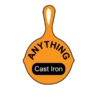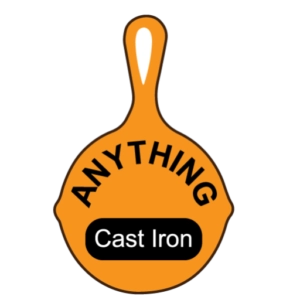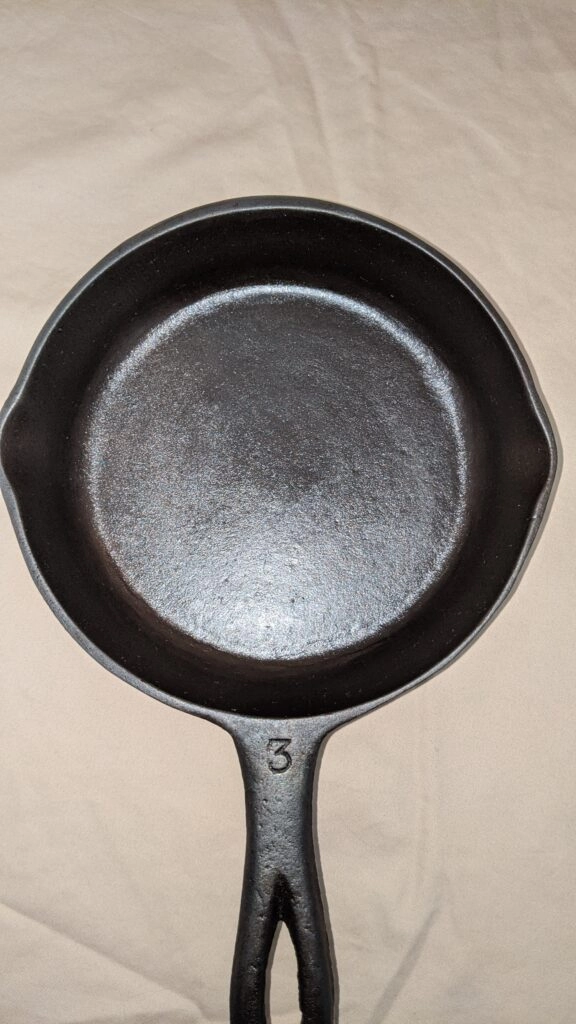Wagner Cast Iron has a rich history
Wagner Hollow Ware Company is a manufacturer of wares for the home (Pre Wagner Manufacturing Company)
The Wagner Manufacturing Company officially began operations in 1891, and the cast iron frying pan produced in 1991 commemorates the company’s centenary anniversary. However, the Wagner brothers, Bernard and Milton, began producing metal castings of light hardware for general stores as early as 1881, according to their own records.
Aside from it, the brothers produced tin hollowware for the government. Tin hollowware is a term used to describe general tableware such as sugar bowls, tea or coffee pots, soup containers, hot meal covers, water pitchers, platters, butter plates, and other metal items that were used in conjunction with the dishware on a dining table.
Vintage-Wagner-Cast-Iron-Skillets
Flatware is not included in the definition of hollowware. Bernard and Milton Wagner, of Sidney, Ohio, are credited with being the first to cast iron for cookware in the United States. WagnerWare was established.
A small aside about the Wagner’s 1891 Original Cast Iron Skillet, which was manufactured in 1991 and commemorated the 100th anniversary of the skillet’s invention — despite the fact that it was marked “Original” and “1991,” this line of cookware was produced from 1991 through the late 1990s.
You can tell a significant difference in quality very immediately. ) Additional information can be found at Cast Iron Chaos, thanks to modemac.
WagnerWare Skillets are made of cast iron.
Wagner Manufacturing Company is a manufacturer in the United States.
Read on to find out why you should use cast iron for cooking…
This marks the beginning of the Wagner cast iron dynasty in the manner that we are familiar with. In 1891, two more brothers, William and Louis, were brought into the mix, which marked the commencement of the production of WagnerWare cast iron cookware.
A market primed for growth, thanks to population growth and expansion, provided the Wagner brothers with the impetus to construct the most contemporary and technologically advanced casting iron manufacturing facility in the world at the time of its construction.
As a result of their ability to make world-class cookware, Wagner Manufacturing was able to compete with, and eventually overtake, the other major player in the cast iron cookware arena, Griswold. Many national and international expositions, including but not limited to expositions in Chicago, Nashville, Paris, Buffalo, and St. Louis, have recognized WagnerWare Cookware for its outstanding performance.
Bringing Wagner and Griswold together
The phrase “Wagner purchasing Griswold” is used in some circles, however, it is not quite that straightforward. However, the real tale is a little more nuanced, and it is extremely normal when tiny family-owned businesses evolve into giant multinational organizations.
Corporations are purchased and sold, consolidated, and dismantled all of the time, and the cast iron cookware industry is no exception. In 1952, the Wagner Manufacturing Company was purchased by the Randall Corporation.
Randall already owned Wagner when McGraw Edison Inc. purchased Griswold on March 29, 1957, and the company sold it to Randall in December 1957.
The beginning of the end is approaching.
The Griswold manufacturing plant in Erie, Pennsylvania was effectively closed in 1957, and all Griswold cookware produced after that date came from the Wagner Manufacturing plant in Sidney, Ohio.
Both Griswold and Wagner were known for producing high-quality cookware, and this marked the beginning of the loss of that tradition.
Although this may seem a little harsh, the majority of experts think that the quality of the product began to deteriorate at this stage.
The final nail in the coffin came in 1959, when Randall sold Griswold and Wagner to Textron, effectively ending the company’s existence.
It is commonly acknowledged that Griswold and Wagner’s cookware manufactured after 1960 does not belong in the same value category as cookware manufactured before 1960. I
t was in 1969 when General Housewares Corporation acquired Textron, Inc., which includes the Griswold and Wagner cast iron cookware lines.
One may argue that the cast iron skillets, dutch ovens, and griddles that were produced during the merger and acquisitions are superior to those produced after 1990 or so, and this is not far from the truth in most cases.
However, when you compare a contemporary day cast iron skillet that is Made in China to a 1970s WagnerWare cast iron skillet that is Made in the USA, or to a 1920s Griswold or Wagner cast iron skillet, the difference will be obvious.
An important point to mention is that cookware that is labeled as “Made in the USA” is not normally considered collectible.
Modern Era
Griswold and Wagner cookware lines were purchased in 1996 by a group of investors, one of whom was a former employee of the Wagner Corporation. The WagnerWare Corporation was the name of this company.
Their operations in Sidney lasted for another three years before the company was forced to close its doors for good in 1999. In 2000, the American Culinary Corporation acquired the rights, history, and remaining facilities of the Wagner and Griswold lines, which were previously owned by other companies.
To Find out more check out… Cast Iron Collector.Com
Join our private Facebook Group.




